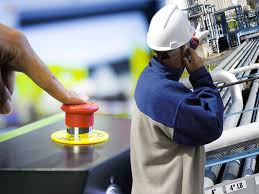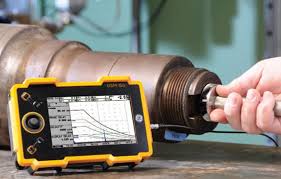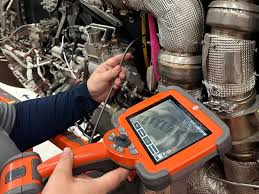In-service inspection NDT in Egypt plays a crucial role in ensuring the structural safety of various facilities and infrastructure. The prac...
In-service inspection NDT in Egypt plays a crucial role in ensuring the structural safety of various facilities and infrastructure. The practice of in-service inspection NDT in Egypt is essential for identifying potential flaws and defects in structures, thus preventing catastrophic failures. This article explores the importance of in-service inspection NDT in Egypt and its impact on structural safety.
In Egypt, in-service inspection non-destructive testing (NDT) is crucial for ensuring the structural safety of various industrial assets, including pipelines, storage tanks, pressure vessels, and more. The use of advanced NDT techniques such as ultrasonic testing, radiography, eddy current testing, and magnetic particle testing helps in detecting and assessing potential defects and flaws in the materials and welds without causing any damage. In-service inspection NDT is particularly important in industries such as oil and gas, petrochemical, power generation, and aerospace, where the integrity of structural components is vital for safe and reliable operation. Compliance with international standards and regulations, such as ASME, API, and ASTM, is essential to maintain the safety and reliability of industrial assets in Egypt. Qualified NDT technicians and engineers play a crucial role in conducting thorough inspections and accurately interpreting inspection results to ensure that any defects or anomalies are identified and addressed in a timely manner. Additionally, NDT plays a significant role in assessing the remaining service life of assets and determining the need for repairs and maintenance. Overall, in-service inspection NDT is an integral part of asset integrity management in Egypt, contributing to the safe and sustainable operation of industrial facilities and infrastructure across various sectors.
The Importance of In-Service Inspection NDT in Egypt

In Egypt, the in-service inspection of materials and equipment is of critical importance to ensure safety, reliability, and compliance with regulations in various industries such as oil and gas, construction, and manufacturing. Non-destructive testing (NDT) plays a crucial role in these inspections by allowing for the detection of defects and irregularities in materials and equipment without causing damage. The use of NDT techniques such as ultrasonic testing, radiography, magnetic particle testing, and eddy current testing in in-service inspections helps to identify potential issues in structures, pipelines, pressure vessels, and other critical components. This proactive approach to maintenance and inspection can prevent catastrophic failures and ensure the continued safe operation of industrial facilities. Furthermore, in-service inspection NDT is essential for ensuring compliance with national and international standards and regulations, as well as for meeting the requirements of insurance companies and regulatory authorities. By implementing regular NDT inspections, companies in Egypt can demonstrate their commitment to safety and quality, protect their assets, and avoid costly downtime and repairs. Overall, the importance of in-service inspection NDT in Egypt cannot be overstated. It is a vital aspect of asset integrity management and plays a key role in ensuring the safety, reliability, and efficiency of industrial operations in the country.
Advancements in In-Service Inspection NDT in Egypt
ut weld inspection

Advancements in the field of in-service inspection non-destructive testing (NDT) in Egypt have been influenced by technological innovations and the growing demand for more accurate and efficient inspection techniques. In recent years, there has been a notable increase in the adoption of advanced NDT methods such as phased array ultrasonic testing (PAUT), eddy current testing (ECT), and remote visual inspection (RVI) in various industries including oil and gas, petrochemical, power generation, and aerospace. These advancements have played a key role in improving the quality and reliability of in-service inspections, leading to enhanced safety and productivity in critical infrastructure and industrial facilities across the country. Additionally, the collaboration between industry stakeholders, regulatory bodies, and NDT professionals has facilitated the implementation of best practices and standards, further contributing to the continuous improvement of in-service inspection NDT in Egypt.
Challenges and Solutions in In-Service Inspection NDT Egypt

Challenges in in-service inspection NDT in Egypt include limited access to advanced NDT technologies, lack of qualified NDT personnel, and the need for better regulatory framework for NDT inspections. Solutions for these challenges can involve investment in NDT training and certifications, collaboration with international NDT organizations, and improvement of NDT standards and regulations. Additionally, the establishment of NDT research and development centers can also help to address these challenges and improve the in-service inspection NDT industry in Egypt.
In-Service Inspection NDT Techniques in Egypt
ut weld inspection
In Egypt, in-service inspection of industrial equipment and infrastructure is typically carried out using various Non-Destructive Testing (NDT) techniques. These techniques include ultrasonic testing, radiographic testing, magnetic particle testing, liquid penetrant testing, and eddy current testing. Ultrasonic testing is commonly used for thickness measurements, flaw detection, and weld inspections. Radiographic testing is used for detecting internal defects in materials using X-rays or gamma rays. Magnetic particle testing and liquid penetrant testing are used for detecting surface-breaking defects in ferromagnetic and non-ferromagnetic materials, respectively. Eddy current testing is typically employed for detecting surface and subsurface defects in conductive materials. These NDT techniques are essential for ensuring the safety, reliability, and integrity of industrial equipment and infrastructure in Egypt, particularly in industries such as oil and gas, petrochemicals, power generation, and manufacturing. Adherence to international standards and qualifications of NDT personnel are crucial for the effective implementation of in-service inspection NDT techniques in Egypt.
The Role of Regulations in In-Service Inspection NDT Egypt
The role of regulations in in-service inspection NDT in Egypt is crucial for ensuring the safety and reliability of various industrial equipment and infrastructure. Regulations help to standardize inspection procedures, qualifications for inspectors, and codes of practice to be followed. This ensures that NDT inspections are conducted in a consistent and reliable manner, leading to the detection and prevention of any potential defects or failures in the inspected components. Compliance with regulations also helps to maintain the quality and integrity of the inspection process and ultimately contributes to the overall safety and efficiency of the inspected assets in Egypt.
Future Trends of In-Service Inspection NDT in Egypt
In Egypt, the future trends of in-service inspection NDT are expected to include the use of advanced technologies such as robotic inspections, drone-based inspections, and automated data analysis. These technologies can provide more accurate and efficient inspection results, reducing the need for human intervention and improving overall safety and reliability of industrial equipment and infrastructure. Additionally, there is a growing focus on the implementation of digital data management systems for NDT inspections, which can improve the accessibility and organization of inspection data, leading to better decision-making and maintenance planning. Furthermore, there is a trend towards the integration of NDT techniques with other inspection and monitoring methods, such as vibration analysis and thermography, to provide a more comprehensive understanding of the condition of assets.Overall, the future of in-service inspection NDT in Egypt is moving towards more advanced and integrated technologies, with a focus on improving accuracy, efficiency, and data management.
Training and Education for In-Service Inspection NDT in Egypt
In Egypt, training and education for in-service inspection NDT is available through various institutions and organizations. These include technical institutes, vocational training centers, and private training companies. Courses may cover topics such as radiographic testing, ultrasonic testing, magnetic particle testing, liquid penetrant testing, and visual testing. Training programs are often tailored to meet international standards and may be certified by organizations such as the American Society for Nondestructive Testing (ASNT) or the International Organization for Standardization (ISO). Additionally, some companies in Egypt offer on-the-job training and apprenticeship programs for individuals seeking hands-on experience in NDT inspection.


